CBSE 2025 Sample Papers for Class 11: One of the best methods to score excellent marks in Class 11 final exam is to solve as...

CBSE Sample Papers for Class 11 2025: Download Subject-wise PDFs
February 18, 2025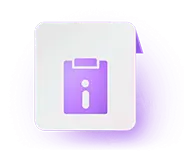
The Meghalaya Board of School Education, MBOSE, was established in 1974 to educate and empower students and the teaching community. MBOSE administers the Class 10 (SSLC) examination, designs the syllabus, assesses and certifies the results. The curriculum is designed with the intent to help students with physical, intellectual, emotional, and artistic development.
The board conducts the Class 10 exam annually. Class 10 is one of the most important stages in a student’s life as it paves the way for higher education and impacts the career choices of a student. This article talks about the Meghalaya Board Class 10 exam 2024 and all exam related information like the syllabus, exam date, exam pattern, and many more. Continue reading this article to learn more about MBOSE Class 10.
The Meghalaya Board of School Education conducts exams for all the students registered for Class 10. The exam is usually conducted in March every year. There are 6 main subjects in the curriculum – Language I, Language II, Mathematics, Science and Technology, Social Science, Physical Health and Education. The question paper will be in English for all the subjects apart from language. The exam duration is 3 hours, and the total mark for each paper is 100. Before going into the details of the exam, let us look at an overview of the Meghalaya Board Class 10 exam.
| Particulars | Details |
|---|---|
| Name of the exam | Meghalaya Board of School Education |
| Level of the exam | State-level |
| Mode of registration | Online/Offline |
| Mode of exam | Offline |
| Class 10 Language Subjects | English, Hindi, Khasi, Assamese, Bengali, Garo, Nepali, Urdu, Mizo |
| Class 10 Academic Subjects | Mathematics, Science and Technology, Social Science, Computer Science, Physical Health and Education, Work Experience, Creative Expression, Environmental Education |
| Frequency of exam | Once in a year |
| Exam date | March 2024 |
| Exam duration | 3 hours |
| Admit card | To Be Announced |
| Result | To Be Announced |
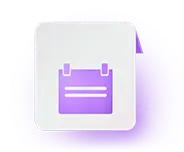

Students who have passed the Class 9 exam must register themselves for the Class 10 board exam in order to be eligible to appear for the exam. The registration process have to be completed before the exam starts so that students can get their admit cards. The registration forms have been released on the website. Usually the school authorities download the forms and fill in on behalf of the students. And they just have to pay the registration fees. Below are the steps to download the registration form from the board’s website.
1st Step: Visit the board’s website, i.e., http://www.mbose.in/
2nd Step: On the homepage, under ‘Notification’, click on ‘SSLC Exam Form 2024.’
3rd Step: School authorities must fill in all the mandatory fields.
4th Step: Pay the registration fees and submit the form.
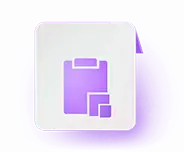
Students appearing for the Meghalaya Board SSLC exam must be aware of the exam pattern to prepare thoroughly for the exam. The exam duration is 3 hours and the full marks for each paper are 100. 80 marks are for theory, while 20 marks are for practicals or project works or assignments. The passing mark for each subject is 30 and candidates must secure at least 30% of their aggregate marks to pass the MBOSE Class 10 exam.
The exam pattern remains similar for all the subjects included in the Meghalaya Board Class 10 curriculum. The total number of questions differ from one paper to another but the marking scheme has a similar pattern. The MBOSE Class 10 question paper usually consists of the following type of questions:
| Question Type | Mark |
|---|---|
| Very short answer questions | 1 mark |
| Short answer type questions-I | 2 mark |
| Short answer type questions-II | 3/4 mark |
| Long answer type questions | 5/6 mark |
The time duration of a theory exam is 3 hours. Students will get 15 minutes to read the instructions, fill in details in the question paper, and answer sheet. There is no negative marking in theory and the practical exam.
| Description | Details |
|---|---|
| Mode of exam | offline |
| Total time duration | 3 Hours |
| Qualifying marks | 30 Marks in each subject and 30% aggregate |
| Negative marking | No |
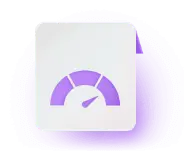
The Meghalaya Board of School Education has set the syllabus to meet the demands of modern-day education. The concepts taught are intended to instill critical thinking, improve problem-solving and enhance conceptual understanding in students. The subjects offered by the Class 10 Meghalaya Board are given in the table below. The sections below provide the Meghalaya Board Class 10 subject-wise syllabus.
| Sl. No. | Subjects |
|---|---|
| Languages | |
| 1 | English |
| 2 | Hindi |
| 3 | Khasi |
| 4 | Assamese |
| 5 | Bengali |
| 6 | Garo |
| 7 | Nepali |
| 8 | Urdu |
| 9 | Hindi |
| 10 | Mizo |
| Core Subjects | |
| 11 | Mathematics |
| 12 | Science and Technology |
| 13 | Social Science |
| 14 | Physical Health and Education |
| Additional Subjects | |
| 15 | Work Experience |
| 16 | Creative Expression |
| 17 | Environmental Education |
| 18 | Computer Science |
The Meghalaya Board Class 10 English syllabus is designed to improve the reading and writing skills in students. Moreover, it also aims to develop a keen interest in learning the subject as a language. Check the Meghalaya Board Class 10 English Syllabus in the table below:
| Section/Unit | Chapter Name |
|---|---|
| I. Prose (Pieces to be read) | Powder and Arms – R. L. Stevenson Great Expectations – Charles Dickens Romeo and Juliet – Charles and Mary Lamb The Demon with the Matted Hair – Indian Folktale The Monkey’s Paw – W. W. Jacobs Fourteen – Alice Gerstenberg |
| II. Poetry (Pieces to be read) | Life – Charlotte Bronte The Gift of India – Sarojini Naidu The Solitary Reaper – William Wordsworth Exiled – Edna St. Vincent Millay The Village Schoolmaster – Oliver Goldsmith |
| III. Rapid Reader | Rapid Reader- Oliver Twist |
| IV. Grammar & Composition | Tenses Active and Passive Voice Reported Speech The Preposition Miscellaneous Idioms Comprehension Letter-Writing (Formal)/Essay E-mail Writing Article Writing Story Writing |
The syllabus teaches students that Mathematics is relevant to their lives and experiences. It also emphasises the development of a child’s Mathematical understanding and reasoning. Therefore students should have a clear understanding of the concepts and their applications. Refer to the table below for the MBOSE Class 10 Maths syllabus.
| Unit/Section | Chapter Name |
|---|---|
| Number System | Real Number |
| Algebra | Polynomials Pair of Linear Equations In Two Variables Quadratic Equation Arithmetic Progression |
| Trigonometry | Introduction to Trigonometry Trigonometric Identities Heights And Distances |
| Coordinate Geometry | Lines(In Two Dimensions) |
| Geometry | Triangles Circles Constructions |
| Mensuration | Areas Related to Circles Surface Areas And Volumes |
| Statistics And Probability | Statistics Probability |
Science is an interesting area for students since it provides a variety of activities, experiments, and projects to focus on. The syllabus allows students to understand concepts intuitively by focusing on fun activities, experiments, and projects. The table below provides the Meghalaya Board Class 10 Science syllabus:
| Unit/Section | Chapter Name |
|---|---|
| Physics | Reflection and Refraction of Light The Human Eye and the Colourful World Electricity Magnetic Effects of Electric Current |
| Chemistry | Chemical Reactions Acids, Bases and Salts Metals, Non-metals and Metallurgy Carbon and its Compounds Classification of Elements |
| Biology | Life Processes Control and Coordination Reproduction in Plants and Animals Heredity and Evolution |
Social Science is an important aspect of general education because it strives to foster an empirical, logical, and humanitarian attitude. History, Civics, Economics, and Geography are the categories covered in the Social Science curriculum. Students can find the Meghalaya Board Class 10 Social Science syllabus in the table below:
| Meghalaya Board Class 10 Social Science Syllabus | |
|---|---|
| Section/Units | Chapter Name |
| History | Events and Processes The Rise of Nationalism in Europe Non-Cooperation and Civil Disobedience Movements Livelihoods, Economies and Societies Industrialisation (1850s-1950s) Urbanisation and Urban Lives Culture, Identity and Society Print Culture and Nationalism Financial Education Electronic Commerce (e-commerce) E-Commerce and Financial Regulatory Bodies of Country Information Technology in Insurance Sector Insurance Ombudsman |
| Geography | Resources Water Resources Forest Resources Minerals and Energy Resources Agriculture Manufacturing Industries Lifelines of National Economy Meghalaya: An Overview Planning Ahead: by the People, for the People |
| Civics | Role of Caste in Indian Politics and Communalism Nature of Indian Federal Structure Popular Struggles and Movements Political Parties Challenges to Democracy Voters’ Awareness and its Importance Women’s Rights in India Supreme Court’s Ruling on Child Abuse The Rights of Persons with Disabilities Act, 2016 Financial Education: Commodity Futures Market Economic Depression Investing in Shares Initial Public Offering (IPO) |
| Economics | Sectors of the Indian Economy The Story of Development Money and Financial System Globalisation and the Indian Economy Consumer Rights Financial Education: Benefits of Insurance Learning to Trade Stock Exchange and Economy |
Health & Physical Education Syllabus helps to keep society healthy, happy and peaceful. It plays an important role in the nature and nurturing of the child. Students can find the Meghalaya Board Class 10 Health and Physical Education syllabus in the following table:
| Unit/ Section | Chapter Name |
|---|---|
| Growth and Development | How Mature Are You? You and Your Family Marriage and Family Life |
| Diseases | Some Defence Measures Against Diseases (Immunity and Immunisation National Health Programme Importance of Pupil’s and People’s Participation in the Implementation of These Programmes Primary Health Care, Meaning and Scope, Health Care Set-Up in Rural and Urban Areas |
| Consumer Education | Consumer Education – Consumer Rights, Making Correct Choices While Buying Different Items, Food Adulteration Systems of Medicine and Quackery Drugs, Medicines and Self-Medication |
| International Health | Importance of International Health |
| Life Skills Education | Teenage Pregnancy Sexually Transmitted Infections Basic Facts About HIV/AIDS Prevention Against HIV/AIDS |
The syllabus aims at protecting our environment by making students aware of types of pollution, its effects, prevention method, etc. It also focuses on saving our environment, and natural resources and balancing the environmental conditions. Students can refer to the table below for the Environmental Education syllabus.
| Unit/ Section | Chapter Name |
|---|---|
| Restoring Balance in Ecosystem | Need for Conservation and Management of Water Conservation and Management of Forests, Grasslands and Semi-Arid Ecosystems Conservation and Management of Soil Conservation and Management of Wildlife Relevance of Indigenous Practices |
| Pollution | Sources of Pollution and Major Pollutants Effects of Pollution on Environment, Human Health and Other Organisms Abatement of Pollution |
| Issues of the Environment | The Decline in Productivity; Resettlement and Rehabilitation of People Energy Crisis – Urban and Rural Sectors Greenhouse Effect, Climatic Changes and Global Warming Acid Rain and Ozone Layer Depletion |
| Striving for a Better Environment | Use of Efficient and Eco-friendly Technology Ecological Restoration and Conservation |
In the developing world, computer knowledge has become a basic requirement for individuals. To achieve it Computer Science Syllabus lays the strong foundation for it. Students can find the Computer Science syllabus for Meghalaya Board Class 10 from the table below.
| Chapter | Topics |
|---|---|
| Computer Fundamentals | Types of Software System Software Operating System Language Translators Utilities Application Software Basic Commands in Operating Systems What is Data? How to Measure Computer Data? Number System Conversion Logic Gates Logic Circuits of Primary and Secondary Gates |
| Internet Basics | Internet How Does the Internet Work? Wired and Wireless connection Protocols World Wide Web (WWW) Web Browser Web Server Website Web Page Web Address IP Address Uniform Resource Locator (URL) Intranet HTML HTML Editor Creating and Viewing HTML Documents HTML Tag HTML Element Structure of an HTML Document HTML Heading Tag HTML Paragraph tag Line Break tag Horizontal Rule tag Text Formatting Tags Comment Tag List Tags Images In HTML Tables In HTML Linking In HTML Frames In HTML |
| Object Oriented Programming I – C++ | What is OOPs? Introduction to C++ Structure of a C++ program Data types Variables in C++ Escape Sequences Input / Output in C++ Operators Precedence of operators Control Structure Loop Structure Bug and Debug |
| Object Oriented Programming II – Java | Characteristics of Java Different Forms of Java Java Program Variables Data Types Operators In Java Programming Structure in Java Some Examples of Java Programs |
| Societal Impacts of IT – II | Virus Worm Malware Spyware Scareware Adware Spam Internet Hacking Protect the Computer Backup and Recovery Tools Information Security Provisions in E-commerce Ways for safety computing |
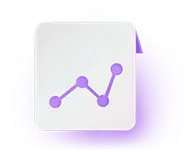
The exam blueprint gives students an idea about the marks distributions of different units or sections of a subject. Knowing this can help students prioritise their studies according to the weightage. It gives them a sense of making a strategic study plan to help them ace the exam. The sections below provides the subject-wise blueprint for the Meghalaya Board Class 10.
Knwoing the English blueprint can help students know what section carries how many marks. In this way they can plan their studies to complete their syllabus on time. Below we have provided Meghalaya Board Class 10 English blueprint:
| Units/ Sections | Marks |
|---|---|
| (i) Prose | 25 |
| (ii) Poetry | 15 |
| (iii) Rapid Reader | 10 |
| (iv) Grammar & Composition | 30 |
| Total Marks | 80 |
Marking Scheme for English Internal Assessment
| Units/ Sections | Marks |
|---|---|
| Listening Skills | 5 |
| Speaking Skills | 5 |
| Writing Skills | 5 |
| Miscellaneous Skills | 5 |
| Total | 20 |
Students should go throught the Maths blueprint properly. It will give them an idea of each unit’s weightage and thus they can map their timetable to the weughtage. Below we have provided Meghalaya Board Class 10 Mathematics blueprint:
| Units/ Sections | Marks |
|---|---|
| Number System | 04 |
| Algebra | 20 |
| Trigonometry | 12 |
| Co-ordinate Geometry | 08 |
| Geometry and Construction | 16 |
| Mensuration | 10 |
| Statistics and Probability | 10 |
| Total | 80 |
Marking Scheme for Mathematics Internal Assessment
| Units/ Sections | Marks |
|---|---|
| Test | 10 |
| Project Work | 05 |
| Any 2 Skill | 02 |
| Total | 20 |
Social Science has a vast syllabus with numerous chapters. Therefore, referring to the blueprint can help students plan their studies and allocate adequate time for each unit or section. Below we have provided Meghalaya Board Class 10 Social Science blueprint:
Marking Scheme for Social Science Internal Assessment (Practicals)
| Units/ Sections | Marks |
|---|---|
| History | 5 |
| Civics | 5 |
| Economics | 5 |
| Geography (Including map works and Disaster Management) | 5 |
| Total | 20 |
Science is a subject that has a great relevance in our daily lives and it is essential to study all the topics thoroughly. Students can refer to the blueprint to make a proper timetable for the subject. Below we have provided the Meghalaya Board Class 10 Science blueprint:
| Units/ Sections | Marks |
|---|---|
| Physics | 26 Marks |
| Chemistry | 26 Marks |
| Biology | 28 Marks |
| Total | 80 Marks |
Marking Scheme for Science & Technology Internal Assessment
| Units? Sections | Marks |
|---|---|
| Physics | 6 |
| Chemistry | 6 |
| Biology | 8 |
| Total | 20 |
Health and Physical Education teaches students a lot about maintaining health, its importance and how they can help spread awareness. Below we have provided Meghalaya Board Class 10 Health and Physical Education blueprint:
| Units/ Sections | Marks |
|---|---|
| Growth and Development | 15 |
| Diseases | 20 |
| Consumer Education | 25 |
| Life Skills Education | 20 |
| Total | 80 |
Marking Scheme for Health and Physical Education Internal Assessment
| Assessment | Marks |
|---|---|
| Written tests | 10 |
| Assignments | 5 |
| Project works | 5 |
| Total | 20 |
To prepare for the Computer Science exam, students should thoroughly study all the chapters. They can refer to the blueprint to know what are their weightage. Below we have provided Meghalaya Board Class 10 Computer Science Blueprint:
| Units/Chapters | Marks |
|---|---|
| Computer Fundamentals | 20 |
| Internet Basics | 18 |
| Object Oriented Programming I – C++ | 18 |
| Object Oriented Programming II – Java | 16 |
| Societal Impacts of IT – II | 08 |
| Total | 80 |
Marking Scheme for Computer Science Internal Assessment (Practicals)
| Practicals | Marks |
|---|---|
| Computer Fundamentals | 5 |
| Internet Basics | 5 |
| Object Oriented Programming I – C++ | 5 |
| Object Oriented Programming II – Java | 5 |
| Total | 20 |
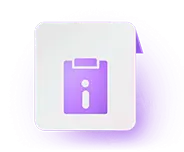
The Meghalaya Board of School Education has released the exam routine for 2022-23. Knowing the timetable, students can prepare for the exam according to the subjects that will be conducted first. The MBOSE Class 10 exam will be held from March 2024. Students can check the Meghalaya Board Class 10 (SSLC) exam date sheet below:
| Date | Subjects (Exam Time: 10 AM to 01 PM) |
|---|---|
| March 2024 | English |
| March 2024 | Science and Technology |
| March 2024 | Social Science |
| March 2024 | Mathematics |
| March 2024 | Health and Physical Education/ Computer Science/ Vocational |
| March 2024 | Indian Languages/ Additional English |
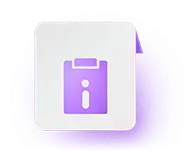
The admit card for the Meghalaya Board Class 10 exam is released on the website a few weeks before the exam starts. Students have to collect their admit cards from the respective schools and carry it on their exam day to the examination hall. The school authorities have to download the admit card from the website and distribute it to the students. Below are the steps to download the admit card for the Meghalaya Board Class 10 exam 2024.
1st Step: School authorities have to visit the website, i.e http://www.mbose.in/
2nd Step: On the homepage, click on the ‘SSLC Admit Card 2024’ link
3rd Step: Log in using user id and password.
4th Step: Fill in the candidate’s name or registration number and date of birth.
5th Step: The admit card will open and can be downloaded.

To excel in the exam, students must thoroughly study the subjects. It cannot be denied that hard work is the only way to nail the exam, but having a study plan helps make the process easier and smoother. Students can follow the preparation tips and detailed study plan to effectively learn all the subjects and ace the exam. Here are some study plans and tips for the students.
Class 10 Board Exams play an important role in students’ education, laying the base for competitive exams and securing a good position in future jobs. It is essential that students study primarily from their Meghalaya Board Class 10 textbooks and then move on to other study resources. The below exam tips will helpful to perform in the MBOSE SSLC exam 2024:
To get good grades in the exam, students need a thorough approach and a study plan.
One should be aware of his or her own talents and shortcomings and prepare accordingly. Here is the subject-wise study strategy for Meghalaya Board Class 10.
Study Strategy for Mathematics:
For many students, Mathematics can be difficult to learn. The following are some Mathematics strategies to perform well in the Maths exam.
Study Strategy for Science and Technology
Study strategy for Chemistry
Due to the numerous equations, reactions, formulas, and experiments required in chemistry, it can be a complex subject sometimes. To get a good grade in Chemistry, follow the recommendations below:
Study strategy for Social Science
It is a scoring and interesting subject. Here are a few tips for good grades in Social Science.
Study strategy for English
English is also a scoring subject and needs comparatively less preparation time than Mathematics and Science. Therefore give the best in the exam, which helps to increase the overall percentage in the exam. Here are a few useful tips for scoring good marks in English.

The MBOSE Class 10 result was released on May 25, 2023. The result is an important document that helps students get into their desired institute and stream. Institutes will refer to their results to help decide a student’s admission into a chosen field. Students can download them from the official website.
Students must collect their original mark sheet directly from the respective school.
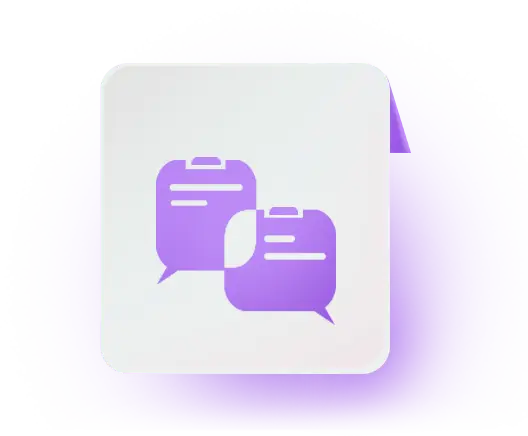
Students can obtain the names of the toppers from the MBOSE Class 10 Toppers List link. Knowing this allows them to understand the competition and the bar set for them to achieve. Here is the list of the five top merit students for the Meghalaya Board of School Education Secondary School Leaving Certificate Examination, 2023.
| Rank | Roll No. | Names of Students and Institutions |
|---|---|---|
| 1 | 41292 | Kevinstrong Lawriniang St. Thomas Higher Secondary School, Mairang |
| 2 | 54418 | Wanteibok Pator, Sawlyngdoh Higher Secondary School, Mowkaiaw |
| 3 | 23494 | Kashish Samee St. Mary’s Higher Secondary School, Shillong |
| 59617 | Mridumay Sahayou Sherwood School, Tura |
|
| 4 | 27476 | Iaphilarisa Khongbuh Synod Higher Secondary School, Shillong |
| 5 | 65655 | Asif Zaman Jawaharlal Nehru Higher Secondary School, Phulbar |

Read some of the most frequently asked questions about Meghalaya Board Class 10 below:
Q: How can I check Meghalaya Board Class 10 result?
Ans: Students can check the Meghalaya Board Class 10 result from the website. The steps to check the result are mentioned on this page.
Q: Where can I get details about the Meghalaya Board Class 10 exam?
Ans: Students can get detailed information about the Meghalaya Board Class 10 exam on this page.
Q: Where can I get practice questions for Meghalaya Board Class 10?
Ans: Students can get practice questions for Meghalaya Board Class 10 on Embibe
Q: Where can I take mock tests for Meghalaya Board Class 10?
Ans: Embibe provides mock tests for Meghalaya Board Class 10 exam.
Q: Where can I get the syllabus for Meghalaya Board Class 10?
Ans: Students can get the Meghalaya Board Class 10 syllabus from this page.

In Meghalaya Board, a total of 783 schools are present in seven districts.
The details of the number of schools, their address, the number of students in each school, results, etc., can be obtained from the official website Department of Education, Government of Meghalaya. The official website for several schools in Meghalaya Schools in Meghalaya.
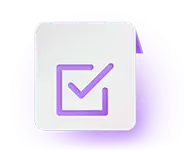
To pass class 10, students must take a board examination conducted by the Meghalaya Board of School Education. Aside from this board exam, several additional national and worldwide competitive exams exist. Exams like these are one way to bring out a student’s interests, abilities, knowledge, and potential. The following are some of the competitive tests that Class 10 pupils can take: